Franges pionnières
Vichy Val d'Allier (FR) - Winner
TEAM DATA
Team Representative: Anne-Laure Marchal (FR) – architect; Associate: Léa Hommage (FR), Mathieu Delmas (FR) – landscapers; Sebastien Deldique (FR) – artist
LALU-BINTJ, 62 rue Félibien, 44000 Nantes – France
lalubintj@gmail.com – bintj.fr
See the complete listing of portraits here
See the site page here
 S. Deldique , A.-L. Marchal, L. Hommage and M. Delmas
S. Deldique , A.-L. Marchal, L. Hommage and M. Delmas
INTERVIEW
1. How did you form the team for the competition?
We met during our architecture and landscape architecture studies in Lille (ENSAP). Our complementary visions and our collusion in making projects convinced us give a try to our mutual ability to work together.
2. How do you define the main issue of your project, insisting on how you answered on this session main topic: adaptability and urban rhythms?
Our project seeks to re-open the site to the territory while preserving the unique features of Montpertuis and Palazol. The site occupation begins and organizes itself from the fringes. From the very beginning, it sets up geometry – paths and allocations that design specific places. These are meant to blossom and gain in density with time.
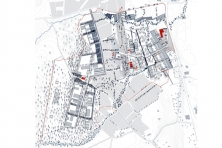
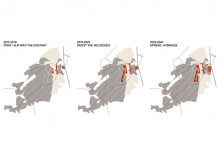
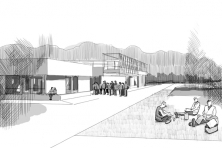
3. How did this issue and the questions raised by the site mutation meet?
Our work combines:
- a specific spatial composition based on the assets and strengths of the site;
- the establishment of spatial and functional requirements that enable the installation of new economic activities and create diverse, enjoyable atmospheres;
- a benchmark place that welcomes the users (the park) in the centre of a constantly evolving and lively landscape.
Each step of the project follows a goal (open, occupy, spread and densify) and is quite sufficient on its own: the last one therefore provides a long-term vision without limiting the inherent value of the previous steps.
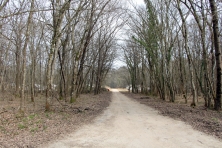
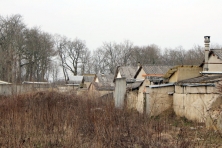
4. Have you already treated this issue previously and could you present some reference projects that inspired yours?
Léa took part in Atelier public de paysage 1 initiated by the ENSAP Lille in partnership with the delegated project management (SEM Ville Renouvelée) on the ZAC de l'Union in 2008-2009 (urban project led by Reichen&Robert). As the implementation of a new neighbourhood takes a long time, the question was: what transitional landscape could we propose for the 15 years of construction?
5. Today –within the era of an economic crisis and sustainability– the urban-architectural project should reconsider its production method in time; how did you integrate this issue in your project?
Our project is a process-project not only able to anticipate randomness, but also to incorporate it. As mentioned earlier, each step of the project is a project in itself, which can accept latency periods related to the economic environment without being a prejudice to the quality of the spaces. Furthermore, we have set ourselves the goal to produce a part of the energy needed by the business operation and to manage the waste on site. Biomass production and water management are part of the landscape composition.
6. Is it the first time you have been awarded a prize at Europan? How could this help you in your professional career?
Yes. As young professionals, we enjoyed working on this exciting project. In fact, the scale as well as the many issues we had to deal with allowed us to practice our skills and our abilities to cooperate with each other. Furthermore, our newly-created studios (architecture and urbanism on one side, landscape architecture on the other) tend to work on this kind of ambitious and challenging projects. Therefore, we hope that our rewarded participation to Europan will give us more visibility and opportunities.